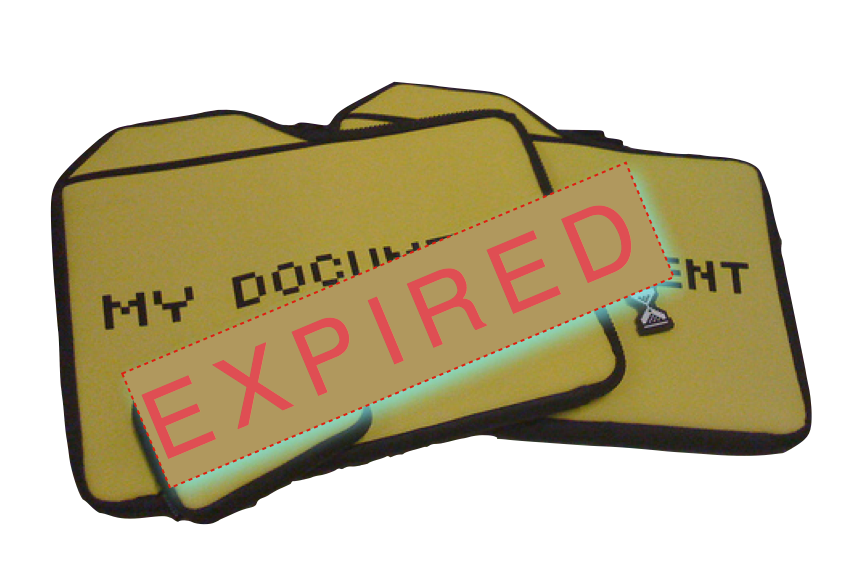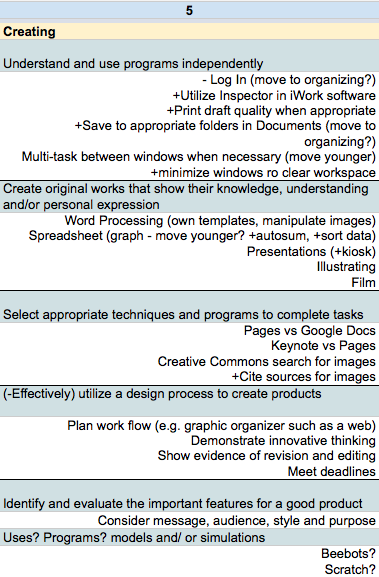Creativity in Math Class

I have recently been thinking a lot about developing an ICT curriculum at school. I am of two minds about this: on one hand it will help teachers and parents to understand the kinds of things that we do in class but…
on the other hand, as technologies change, so too do the tools that we use (and these changes are both frequent and rapid) so any written curriculum will quickly need revisions.
In an effort to help others, we are forging ahead and creating a curriculum document that we hope we can all live with.
On Paper
As an IB school, we opted to use the PYP strands of Creating, Collaborating, Communicating, Investigating, Organizing and Becoming Responsibile Digital Citizens. We started with an example shared via Twitter by Andy Birch and started to revise it to meet our needs. Since I teach K-5 and my teaching partner teaches grades 6-7, we decided to start with grade 5 and then I would fill in everything below and they would fill in everything above. It’s still a very rough draft and it all looks both boring and dry on paper but here is our start on documenting Creativity:

In Reality
I had 30 minutes to work with a small group of boys in a math class. They already understood how the lattice method of multiplication worked so I brought in some iPads and told them that there were 2 apps that they could use to create their own tutorial for the other boys in their class and the grade 4 students. They had previously watched some Kahn Academy videos in their classroom so all I told them was that Doodlecast and Explain Everything were both whiteboard apps that they could write on and record their voice at the same time. When they were done, they should share their videos with me. This explanation literally took 2 minutes and since the iPads all had an associated email address it was very easy for them to just email their videos to me.
They split up (some worked alone and others in pairs) and in the next 20 minutes they all created and shared a video.
Here’s an example:
Were they all perfect? No.
Did it allow them to review what they know about the lattice method of multiplication? Absolutely.
Were they keen to revise their work in the future for a wider audience? Most definitely!
The process is really what was important for me – they consolidated their math and learned about the podcasting process. When we look at creating in our upcoming ICT classes this will give them some prior knowledge about the challenges and benefits.
The fact that we have scheduled classes is another story altogether!
Leave a Reply